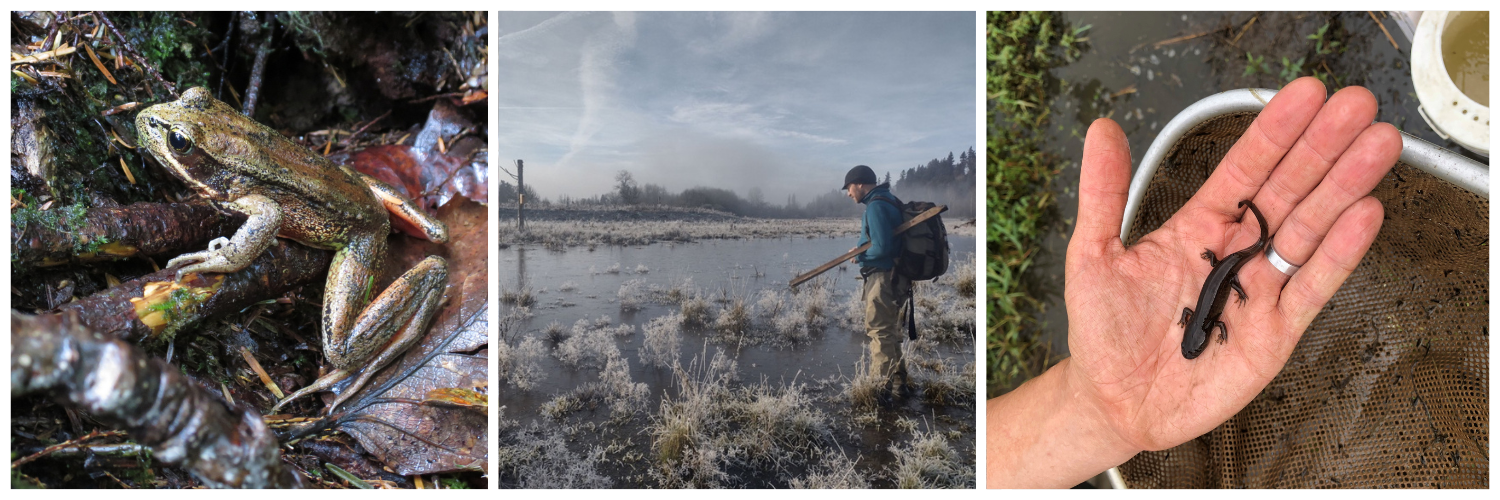Where My Frogz At?
During early spring, ponds in the Snoqualmie Valley are a busy place, at least for a few creatures including northern red-legged frogs, pacific treefrogs, northwestern salamanders, and our own Oxbow Habitat Restoration Technicians. You can find the latter wading through water, overturning vegetation, and counting egg masses to evaluate amphibian abundance. Our team’s observations help other conservation experts understand where our local amphibians are (and aren’t) breeding across the region and evaluate if and how habitat restoration efforts are benefitting their populations.
Why are we concerned with amphibian populations?
Two words: umbrella species.
In conservation, umbrella species are species whose protection likely ensures the survival of all the other naturally occurring plant and animal species in their ecosystem. By meeting the environmental needs of these designated organisms, other species that are a part of their ecosystem will also benefit under the same conservation “umbrella.” Simply put—save it, and you save others.
In the Pacific Northwest, some conservationists are particularly concerned with northern red-legged frogs and consider them an umbrella species because of their reliance on diverse habitats. These frogs not only require healthy ponds for breeding, but also large areas of connected healthy forest habitat where adults spend summer through the early winter months. In areas like the Snoqualmie Valley, agriculture and development often damage or destroy forest and remove precious woodlands from breeding ponds making amphibian migration difficult or impossible. This disruption to migration happens despite red-legged frogs’ ability to travel up to 5km from their breeding ponds.
If we restore forests, can we restore frogs?
Yes! Our team at Oxbow believes that by focusing efforts on conserving existing forest, and restoring pockets of floodplain forests throughout the Snoqualmie Valley, we can not only help our red-legged froggy friends rebuild, but northwestern salamanders, long-toed salamanders, and other native amphibians as well.
Why do we believe that?
Science!
Over the past 3 years, our Conservation Team has been conducting a study in partnership with the Woodland Park Zoo and with funding from Conservation, Research, and Education Opportunities International (CREOi). Our team has been sloshing through and surveying different wetlands at various stages of restoration—from forested, to partially/recently restored, to grassy and unrestored—and they’re tracking sightings of different amphibian egg masses, tadpoles, and larvae. Long story short, the results offer a message of hope.
If you build it, they will come
One crucial survey site is a place called Keller Farm Mitigation Bank in Redmond, WA. Though it borders a healthy forest along Bear Creek, this 75-acre wetland was a fallow field, loaded with invasive plant species. Then in Fall of 2020, Habitat Bank LLC, a wetland and conservation banking company, began to transform these abandoned fields by excavating new ponds and channels; removing noxious and invasive species; and planting thousands of native trees, shrubs, and herbaceous species to re-establish a mosaic of habitat communities. This special site provided our team a rare opportunity to witness amphibian recovery as it happens, from inception of the wetland and onward as it matures.
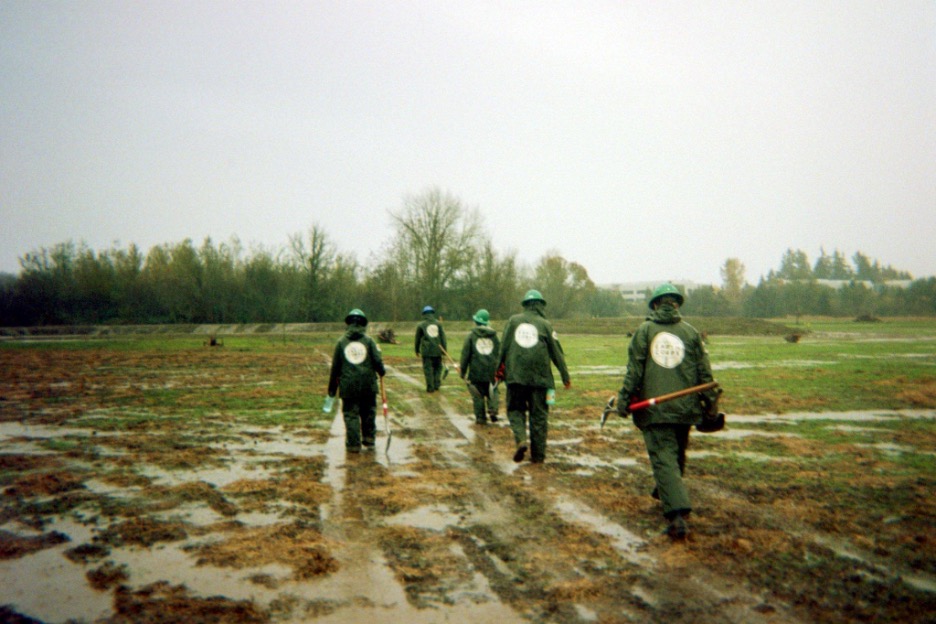
In 2021, the site’s new plants had just begun to develop, and our team found no amphibian presence in 5 newly created ponds or 3 newly created segments of channel. Despite that, there were signs of hope. Our team found one northern red-legged frog egg mass and one northwestern salamander egg mass in a pre-existing ditch, as well as an adult red-legged frog seen hopping around on the property. What that suggested was that there was a population of red-legged frogs nearby who might want to use these newly available wetlands as they develop.
Only a year later in 2022, not only did our team find northern red-legged frog egg masses in one of Keller’s permanent water bodies, they found egg masses from three different amphibian species! We’ve learned that amphibians can find and start using these restored ponds quite quickly, and that at least for this site, there were aspiring amphibian parents waiting in the wings, searching for the right place to lay their eggs. Oxbow’s Conservation Team is very excited to continue surveying this site in 2023 and beyond.
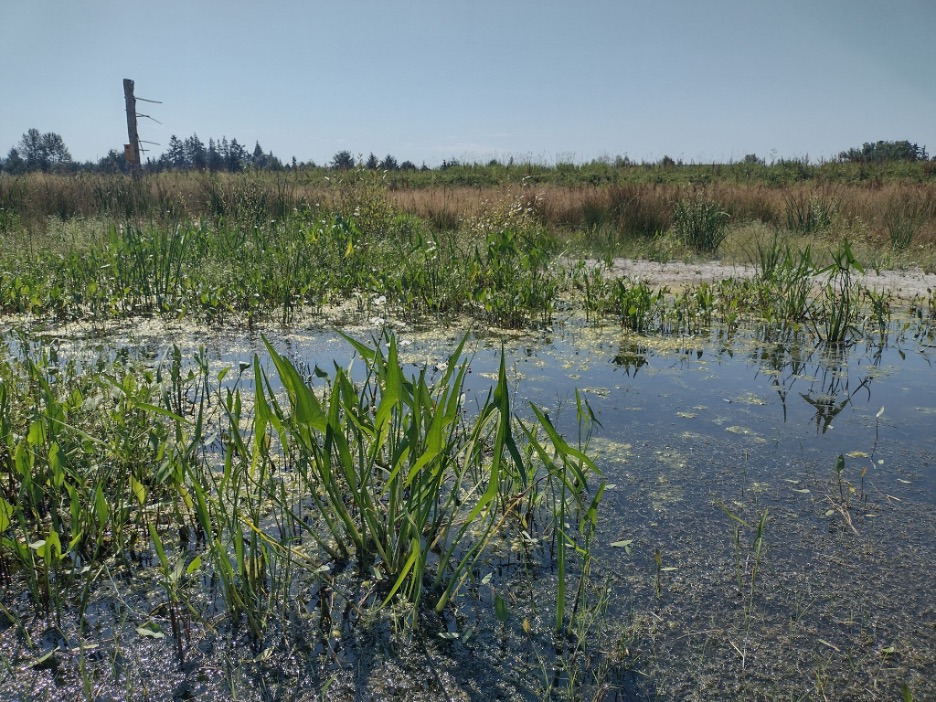
Balancing agricultural productivity and ecological restoration
River floodplains like the Snoqualmie Valley (where Oxbow is located) have the potential to support large populations of amphibians, but these same areas are very desirable agricultural lands. As a result, they have been heavily impacted by farming, the introduction of invasive species such as American bullfrog (Lithobates catesbeianus) and reed canarygrass (Phalaris arundinacea), and other human activity—all major obstacles to the success of the northern red-legged frog.
Despite all the changes to the valley’s floodplains, this agricultural district still offers a wealth of precious breeding habitat for these amphibians! In 2020, Oxbow ecologist Matt Distler used spatial analysis of wetlands in Snoqualmie Valley to locate potential breeding ponds and found that these agriculturally developed floodplain areas are also bursting with hundreds of ponds and wetlands that amphibians might be able to use—if they have suitable forest habitat nearby.
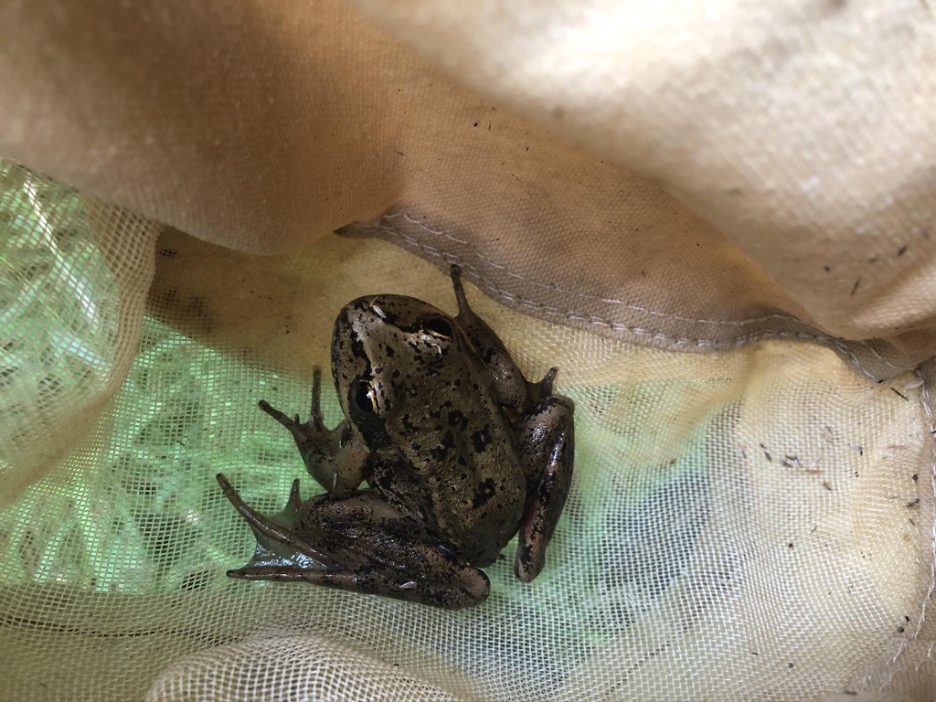
Survey numbers of these wetlands reveal that only 1% of amphibian egg masses belong northern red-legged frogs, and these egg masses were only found in ponds with some surrounding forest and shrubland. Although this indicates their population may be vulnerable, it shows that these frogs do still have a presence in the Valley. It also proves that they are finding ways to make use of the patchy forested wetlands that dot the agricultural landscape, and that restored forests may provide enough resources for their population to persist. Especially where there are low, wet areas with poor agricultural productivity, farmers and other landowners in our agricultural valleys have a great opportunity to put up a protective ‘umbrella’ over frogs and other wildlife by helping to re-establish native forest around floodplain ponds.
Want to get involved?
Amphibian monitoring training at Woodland Park Zoo is an exciting opportunity to get hands-on experience with amphibian conservation while increasing your connection to local ponds and wetlands and contributing to authentic scientific research.
Become an Oxbow Member and directly support our research and restoration efforts. You can grow your engagement through tours and talks by our passionate and professional researchers and producers.
Stay connected with us via Instagram, Facebook, and our Newsletter so that you always know about the latest happenings here at Oxbow!
